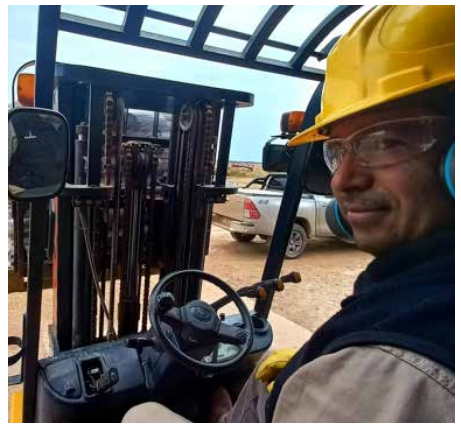


As a company responsible for the occupational health and safety and hygiene conditions of its collaborators, CRESUD complies with the labor and social security requirements of all its personnel; in this way, it guarantees access to adequate conditions in the workplace, such as the provision of drinking water and its due control, decent housing conditions and work equipment (machinery and personal protection elements, work clothes, among others), as required by the legislation in force. 
We have a Safety, Hygiene and Occupational Health area, integrated by a leader and two internal referents, geographically and strategically distributed in the northern and southern farms of Argentina. This ensures compliance with the plans defined in this area for the different establishments, which include issues such as periodic surveys of facilities (housing, workstations, machinery, equipment, use of PPE).
100% OF EMPLOYEES AND CONTRACTORS ARE COVERED BY AN OCCUPATIONAL HEALTH AND SAFETY MANAGEMENT SYSTEM, SUBJECT TO INTERNAL AND EXTERNAL AUDITS.
These annual plans are generated to make corrections and improvements to all processes related to the area. Audits and controls are also carried out on the work methodology and the practice of safe procedures. The area also carries out annual environmental measurements of noise, vibrations and lighting in the work environment, analyzing ergonomics through protocols; it also identifies the personal protective equipment that is appropriate for the different tasks and checks its approval, thus guaranteeing the quality of the product that the personnel will use for the different tasks.

Within the framework of occupational health, we have a program that includes vaccination campaigns for personnel, medical visits to the farms, occupational examinations, periodic examinations and first aid training. Outsourced work (mainly machinery companies) is performed by contractors. These contractors must comply with the operating and contracting conditions at the time the service is rendered; this implies a commitment to deliver monthly labor documentation for their personnel, as well as to guarantee adequate living conditions for them during their stay in our farms. The Company’s vehicle fleet is equipped with a satellite monitoring system, from which speed controls are carried out and the driving profiles of all drivers are assessed.
We implemented the Hazard Identification and Risk Assessment (IPER) tool, which allows us to identify hazards, assess and assess risks and, in addition to establishing the necessary controls to mitigate those risks associated with the tasks performed by personnel in the different areas, its main function is to protect the safety and health of all personnel, through the continuous improvement of the Annual Health and Safety Plan.
The process is carried out through a risk matrix, where the different risk levels of each activity are determined and, finally, mitigation/prevention controls are defined, such as training on specific personal protective elements for each task, safe work procedures and/ or internal standards, or legal compliance aspects.